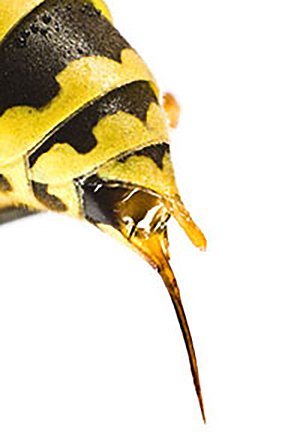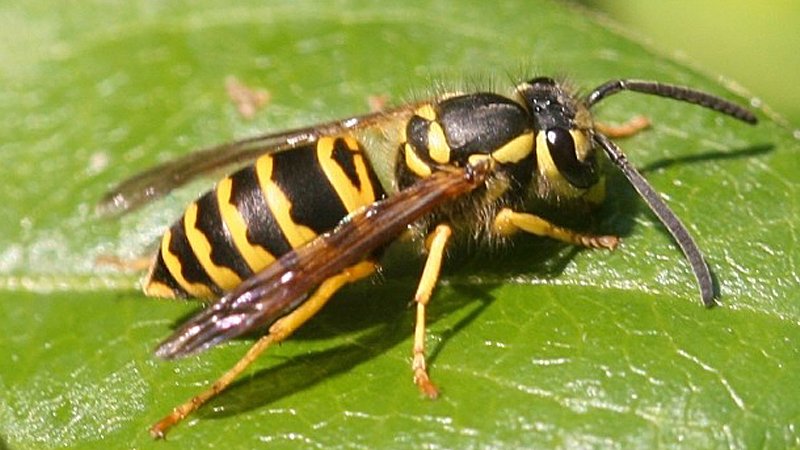A maintenance crew worker for the El Conquistador Golf Resort, died June 27 three days after being stung by a swarm of stinging insects at Pusch Ridge Golf Course near Tucson, Arizona.
 Rick Messina, 57, was working on the No. 8 hole at Pusch Ridge Golf Course in Oro Valley early in the morning on June 24 when he was stung by a swarm of undetermined stinging insects, according to a news release by El Conquistador. He died in a local hospital three days later.
Rick Messina, 57, was working on the No. 8 hole at Pusch Ridge Golf Course in Oro Valley early in the morning on June 24 when he was stung by a swarm of undetermined stinging insects, according to a news release by El Conquistador. He died in a local hospital three days later.
Professional beekeepers were called in and inspected the three-course, 45-hole El Conquistador property. They determined there were no hives or colonies on the property, and warning signs were posted throughout the course.
The company said bees were responsible for the attack, but a leading entomologist points elsewhere, namely at the business end of a yellow jacket (shown at right).
"It is unlikely that honey bees, or indeed any bees, were responsible for the incident unless the worker directly disrupted a honey bee hive, which apparently were absent, Dan Potter, Ph.D., professor emeritus at the University of Kentucky, said via email. "Individual honey bees foraging for nectar and pollen on flowers are docile and non-defensive, going about their business (unless stepped on with bare feet, picked up and held, etc.). They do not 'swarm' or mass-attack people unless there is an imminent threat to the colony (which triggers alarm pheromone release by guard bees that recruits resident workers to communal defense of the hive). This could occur if, say, a person chain-sawed a tree having a wild colony in a tree hole, or knocked over or roughly messed with the boxes of managed hive, but it sounds like no such scenario was involved.
Potter, the 2010 recipient of the USGA Green Section Award, said it is more likely that the victim disturbed a nest of yellow jackets, which are a type of wasp.
"It's MUCH more likely that the worker inadvertently disturbed a colony of yellow jacket wasps, which build their papery nests in cavities in the ground (e.g., rodent burrows), stone walls, shrubs and trees, tree trunks and stumps, among piles of stone, wood or lumber stacked outdoors, and in the walls and eaves of buildings, Potter wrote. "This could happen when mowing, pruning, removing logs or fallen trees, or other land care activities. These wasps are highly defensive and will attack and pursue perceived threats to the nest.

According to the National Vital Statistics System, an average of 72 people die in the United States every year from stinging insects, including bees, wasps (including yellow jackets) and hornets.
"Bees and wasps are not the same, Potter wrote. "Most human-encountered yellow jackets are alien invasive species, so control is warranted when they become a hazard. Bees are beneficial pollinators and the USGA and many other organizations are working with golf courses to encourage promoting pollinator habitat in naturalized roughs.
"It is good for outdoor workers to be aware (or educated about) how to avoid encounters with stinging insects, to recognize symptoms of hypersensitivity in self or co-workers and to take appropriate medical precautions (e.g., carry an epinephrine auto-injector) if allergic.
For more information on how to control wasps, hornets and yellow jackets, please visit this page authored by Potter's brother, Michael Potter, Ph.D., extension professor emeritus at the University of Kentucky and an expert in urban entomology.
The U.S. Centers for Disease Control and Prevention provides the following recommendations for dealing with attacks from stinging insects:
- Removing the stinger: As soon as possible, use a thin, dull edge, like a credit card or table knife, to scrape the stinger out. Do not squeeze the stinger or use tweezers.
- Washing the area: Use soap and water to remove venom and reduce the risk of infection.
- Applying ice: Wrap an ice pack in a towel or cloth and place it on the sting for at least 20 minutes every hour to reduce pain and swelling.
- Elevating the area: If the sting is on an arm or leg, try to elevate it.
- Taking medication: Acetaminophen or ibuprofen can help with pain, while an antihistamine like diphenhydramine or loratadine can help with itching and swelling.
- Applying a paste: Make a paste of water and baking soda, and apply it to the sting to help neutralize the venom and reduce swelling and itching. Cover with a bandage and leave it on for at least 15 minutes. Hydrocortisone cream or calamine lotion also can be effective.

